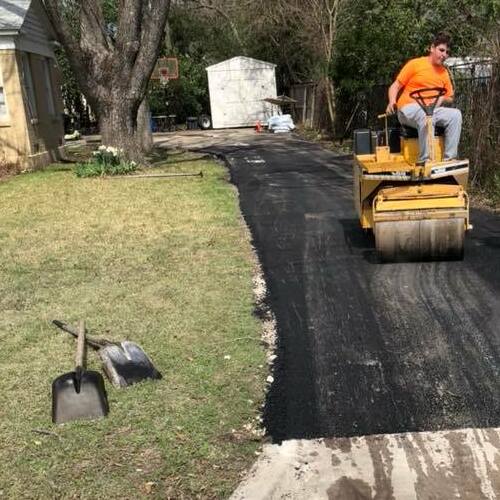
Seems like we can’t go anywhere in the Waco, Texas area, or the entire state, without dodging a pothole. Repairs of these seem to be slower than the creation of them, and the repairs don’t seem to last long either. This makes for a good discussion for many, especially if you live or work on a road that is almost like one big pothole!
How do potholes form?
There is no standard shape and size of potholes, you’ve probably noticed that as you made your way to work. When the top layer of the pavement isn’t strong enough to handle the traffic flow, it cracks. As it cracks, this allows water to get to the sub-base under that top layer, and then that water freezes, thaws, refreezes, and eventually that crack becomes a pothole. The pothole gets bigger as traffic increases going over it.
How are pothole repairs done?
There are different methods used for pothole repairs. If they aren’t done correctly, however, they won’t last long. Pothole repairs should be done by considering the season changes, the sun exposure, and other conditions that can have an effect.
The best method for pothole repairs is the full-depth patching method. This involves cutting and removing the distressed asphalt, the replace it with new materials. The steps involved in this include:
- Cut and remove the loose asphalt, around and inside the pothole.
- Rinse the pothole opening to remove any debris, dirt, and rocks.
- Allow the pothole and surround area time to thoroughly dry.
- A chalk outline is created around the cutting sections, extending into sound part of the asphalt. The outline should a minimum of 12” all around the pothole.
- Remove the broken sections of asphalt and assess if additional drainage should be installed.
- Level the subgrade layer with a vibrating compactor or roller.
- Fill the opening with a hot-mix or cold-mix asphalt solution. If the area is larger, the mixture should be divided into 4” layers.
- Using compaction equipment, spread the asphalt mixture, one full 4” layer at a time until it is even with the original road surface.
- Check the level of the patch and if needed, repeat the compaction.
Why do potholes form in winter?
The winter has a higher number of potholes formed because if there are any cracks, of any size, water seeps inside them. Then as the temperature drops, the water freezes, expands, and causes the crack to enlarge. The frozen water thaws, refreezes, thaws, repeat – this keeps expanding the surface around the crack. Then as traffic goes over this crack, it creates a pothole. Repairs of a permanent stature can’t take place until the pothole and surrounding surface can dry out.
Why do potholes get bigger?
Weak subbase, weak road surface, and the daily traffic flow. That traffic can be from the smallest car to the biggest 18-wheeler. Sit in a parking lot one day and watch the amount of traffic that comes down the road you’re driving on that is riddled with potholes.
How do potholes form in warm climates?
So here in Waco, Texas, we don’t have a lot of that winter weather in a normal year. But that doesn’t mean we don’t have our share of pothole repair needs! Potholes here are created by water and heavy traffic too! We do have rain, a lot of rain sometimes. A crack forms in the surface of the road, rainwater seeps in, it freezes, thaws, refreezes, thaws, and the process repeats.
Just because the temperature in this area doesn’t always get below freezing doesn’t mean it won’t cause potholes though. That water seeps in the crack and starts eroding the sub-base, weakening the surface, and then the traffic driving over it creates the potholes.
Do potholes always cause damage?
Absolutely! When you drive through a pothole at a normal speed, it can damage your tires, bend your wheels, break the shocks, and unalign the front end. The harder you drive through the pothole, the more damage can happen to your car. Many motorists have been stranded with flat tires or a broken front end.
Does auto insurance cover damage caused by potholes?
That will depend on your auto insurance policy. Coverage is available on most car insurance policies for pothole damage if you have collision coverage. In Texas, the law states the only insurance requirement is liability. Collision coverage is extra and if you don’t owe on your car, you aren’t required to have collision coverage.
Keep On Rolling!
As a driver, there isn’t much you can do about pothole repairs, other than pay higher taxes. Therefore, your best defense is to watch your driving style, and cautiously drive through potholes if you can’t go around them. If you do have to drive through one, and you weren’t able to be cautious, use your collision coverage for the repairs on your car!
